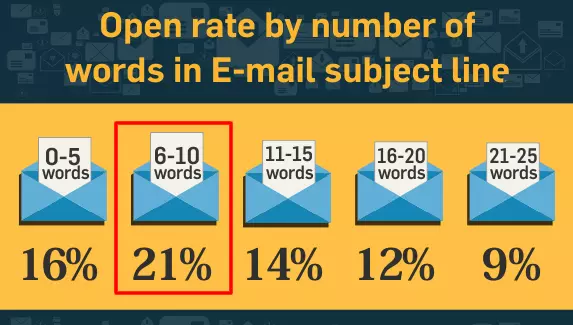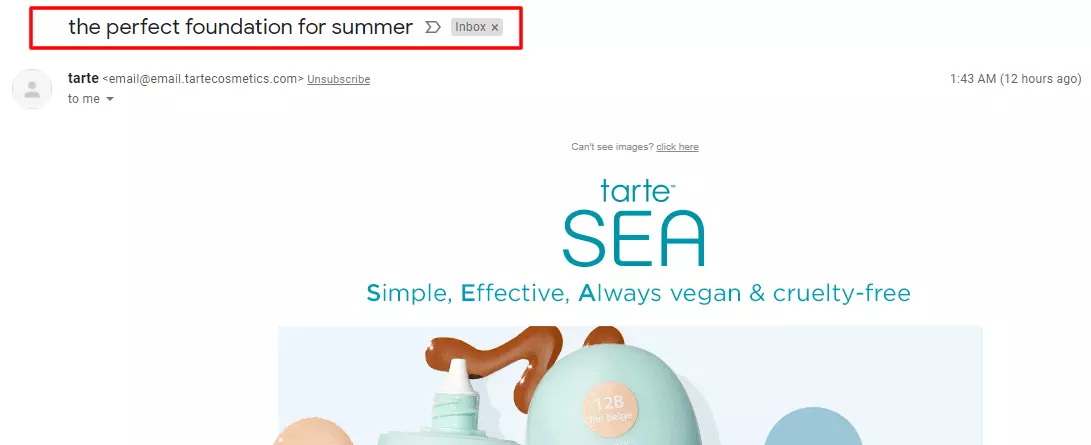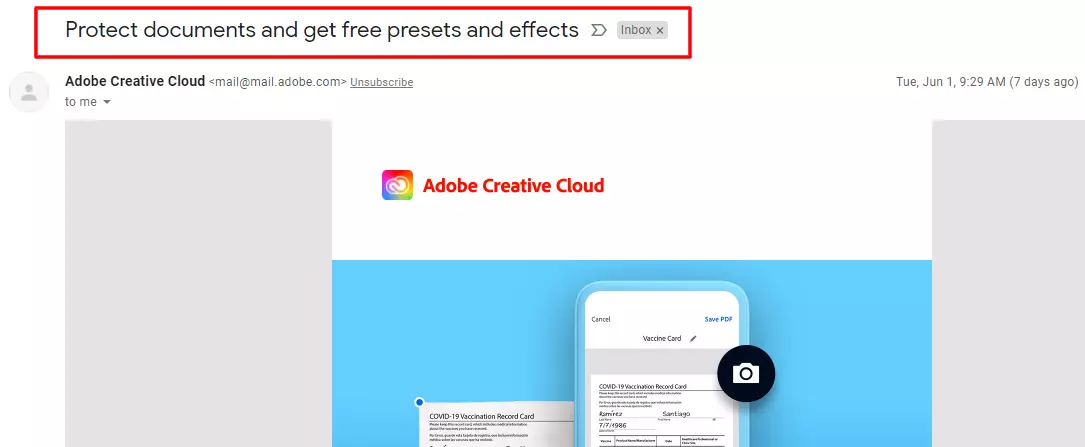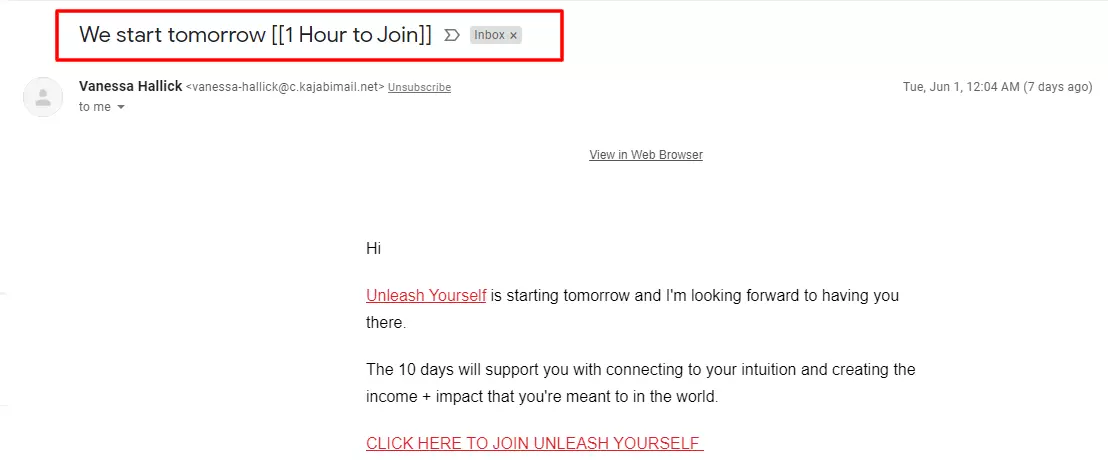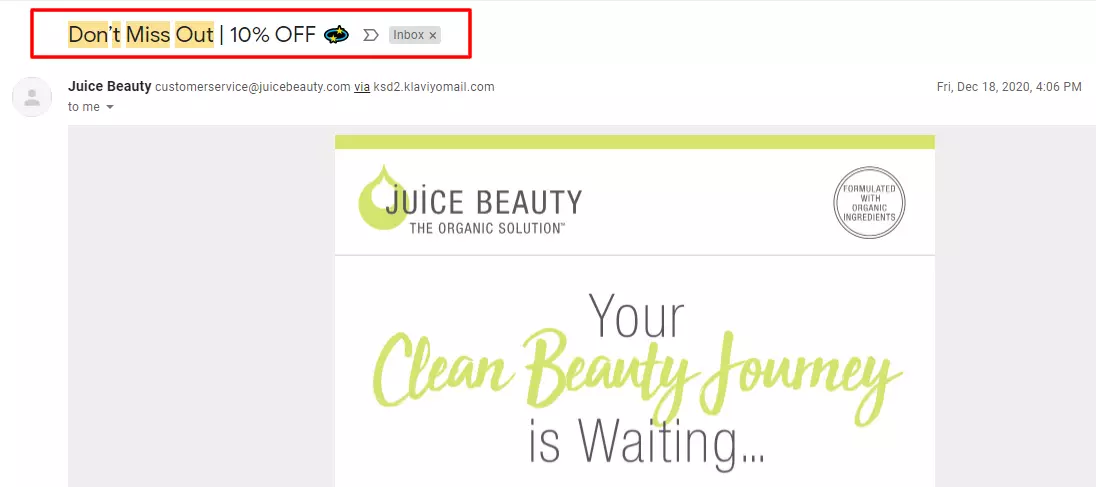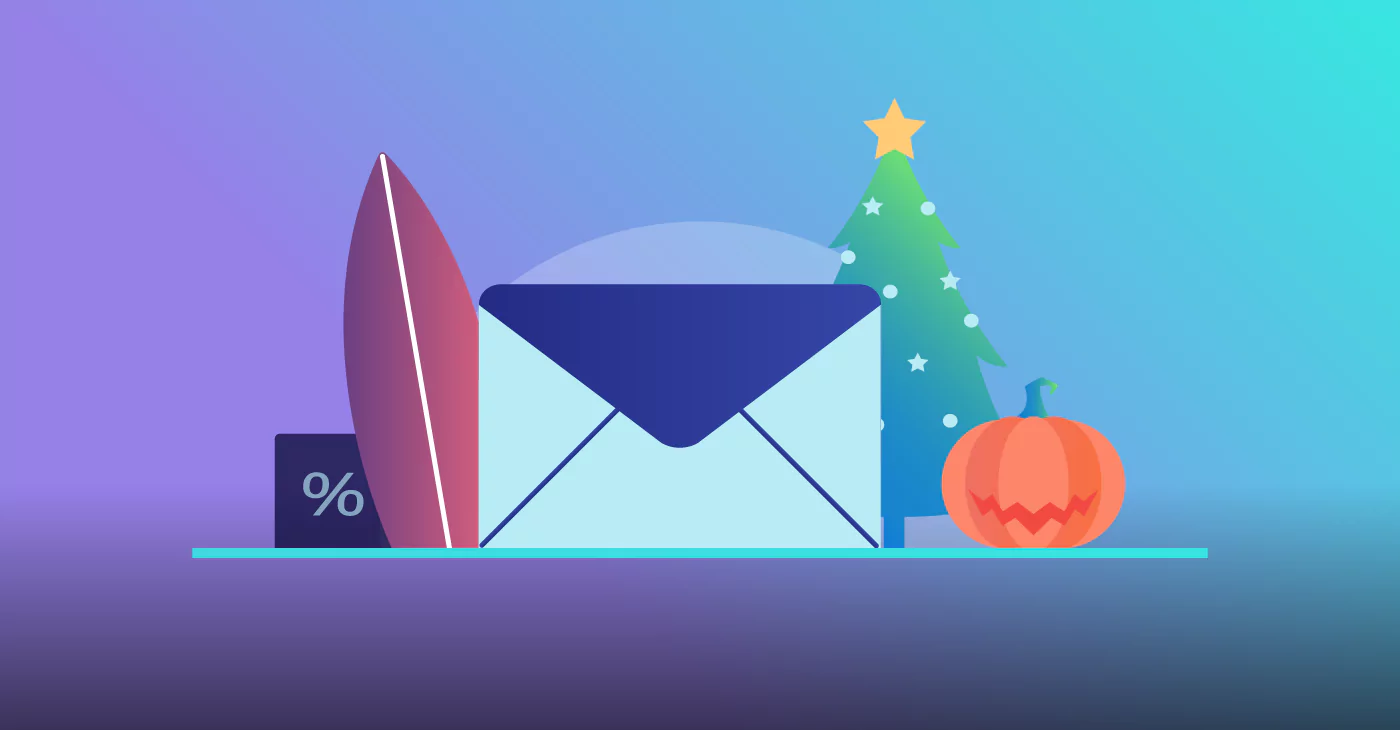89 Winning Email Subject Lines Online Retailers Can Take Inspiration From
April 26, 2023 9 min read
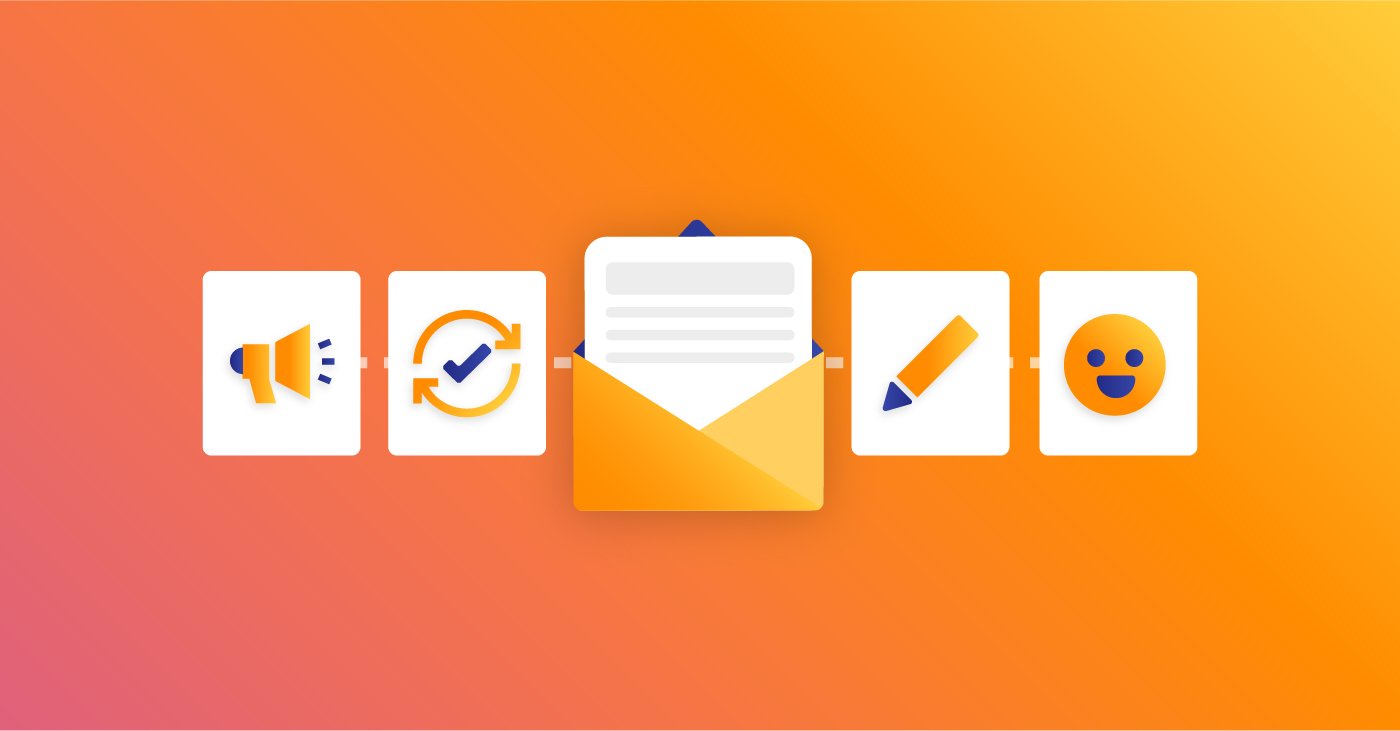
Despite trending social media channels and mobile messengers, email is still one of the top channels for businesses.
In 2020, there were four billion global email users, a number that’s projected to reach 4.6 billion in 2025 — more than half of the world’s population.
That’s why every eCommerce business must have a solid email marketing strategy. But what’s one of the most important aspects of email marketing?
Crafting the best email subject lines.
Before we give you a list of 89 winning email subject lines, let’s take a look at what makes a successful subject line.
What Makes a Successful Email Subject Line?
47% of email recipients open emails based on the subject line alone. In other words, your email subject line determines whether recipients will open the emails you send them.
Before we go over subject line examples, let’s examine at how to create a successful email subject line.
Here are five tips to keep in mind:
1. Aim for 6 to 10 Words Per Subject Line.
21% of email recipients open emails with subject lines that have six to ten words, but just 14% open them if subject lines have 11 to 15 words.
2. Include The Recipient’s Name
18.30% of email recipients open emails with subject lines that include their name (while 15.70% open them if the subject line doesn’t include their name).
3. Test Your Subject Lines Beforehand
Testing your subject lines ahead of time with A/B testing and subject line tester tools is crucial for knowing whether they’ll be successful.
4. Make Sure Every Word Serves a Purpose
Subject line tester tools will flag any word in your subject that doesn’t serve a purpose or would throw a recipient off.
Your subject lines should always serve a direct purpose and vary depending on the intent of each email. For example, fundraising outreach emails will have different subject lines than sales emails.
5. Optimize Subject Lines for Mobile
Since most people open emails on mobile devices, optimizing your subject lines for mobile is essential. Use a tool like Zurb’s TestSubject to see how your subject lines will appear on popular mobile devices, or hire a front-end development team to adopt any web product to mobile. You’ll also need to make sure your mobile forms, digital signatures, and other clickable elements work properly before sending them off.
Bonus tips:
- Use personalized subject lines (i.e., offers you know they’ll like)
- Create a sense of urgency and exclusivity (i.e., “An offer just for you. Expires at 9 am.”)
- Include the word “free” when appropriate. These emails are opened 10% more. But keep in mind that spam filters sometimes flag that word.
- Add a playful tone with emojis when appropriate.
89 Winning Email Subject Lines to Inspire eCommerce Businesses
Spark Curiosity
Sparking curiosity entices email recipients to stop what they’re doing and genuinely wonder what your email is about.
The urge to satisfy their curiosity is enough inspiration to open your email.
Take this example from makeup company Tarte, which reads: The perfect foundation for summer.
Anybody who wears makeup knows that it’s tricky to find a foundation that won’t melt all over your face during the summer. This subject line is enough to spark the question: “I wonder what kind of foundation that could be.”
Here are some other curiosity-sparking subject lines that companies have used:
- Madewell: Everyone’s gonna ask you about these
- Mary Fernandez: a surprise gift for you! {unwrap}
- Rifle Paper Co: Don’t Open ‘Til After Dessert
- Leonie Gabriella: Why I want you to get rich 🔥 (+ scholarship)
- Bath & Body Works: Black Friday Secrets Revealed!
- Jasmine Star: Can’t believe I wrote this
- BabyCenter: Your 10-month-old: Week 2
- Contena: New Job That Matches Your Criteria
- Leonie Gabriella: 🥳 are you joining?!
- Medium Daily Digest: How To Use Neuroscience To Build Habits
Other examples of subject lines that generate curiosity include:
- We made this new product just for you
- Wanna know something special? ✨
- Don’t miss this sneak peek
- Here’s the product you’ve been waiting for
- We can’t believe this just happened
- Gift inside. Open this by 9 pm to see it
- This shocked us
- We’re breaking our own rules
Offer Discounts and Deals
Offering discounts and deals is a great way to encourage your email recipients to try a product or service.
The key is offering them a discount or deal you know they’ll love. To understand your audience’s preferences and desires, you’ll need to conduct audience research. Then, tailor your subject lines to meet their preferences.
Take this example from creative apps company Adobe Creative Cloud, which reads: “Protect documents and get free presets and effects.”
Adobe knows about document protection and creative features, so it highlighted those in a subject line.
Here are some other ways companies have included discounts and deals in their subject lines:
- Guess: 25% off your favorites
- Rapha: Complimentary gift wrap on all purchases
- Amazon: Prime Day deals for early birds
- TruthFinder: Final Reminder. 50% OFF Your Report
- Astoria Activewear: 50% OFF + Get a FREE Gift Card
- OceanWP: Farewell gift from Jack the Shark up to 40% OFF
- Tarte: ENDS SOON: UP TO 65% OFF
- YogaDownload: 10% Off Yoga Retreat in Tulum
- Facetheory Skincare: Get 25% off. For 24 hours only
- Brian Moran: [Offer] 93.29% Off
- Zoom Video Communications: [Save 25%] Your Offer Ends Friday
- Project Syndicate: Help us improve (and get 50% off your next subscription)
Other examples of subject lines that offer discounts and deals include:
- Shop now and get 25% off your first order
- Get free shipping on all orders today
- Summer sale ☀️: 15% off two products
- 40% off skincare products all day Sunday
- Starting now: buy one get one free sale!
- Earth Day 🌎 sale! 50% off all products
- Got the Monday blues? Here’s 30% OFF
Generate Urgency
Creating a sense of urgency is a great tactic that will inspire your readers to act right away. Why? Because they don’t want to miss out on whatever you’re offering — especially if you’ve done the research and know what they’d like.
When creating a subject line with the intent to generate urgency, make sure to always include the following:
- The time that your offer expires
- An audience-targeted offer (or spark curiosity by leaving it out)
- Urgency-related language like “we start tomorrow,” or “limited stock,” or “last chance.”
- A way to take advantage of the offer (inside the body of the email)
Take this example from business coach Vanessa Hallick, which reads: “We start tomorrow [[1 Hour to Join]].”
In this example, Vanessa uses a short timeframe to generate urgency. She also doesn’t name her offer, which sparks curiosity. When recipients open the email, they realize they have only one hour to join her coaching program before it disappears.
Here are some other ways companies have generated urgency in their subject lines:
- Birchbox: Last chance to get in on this hot deal
- Digital Marketer: [URGENT] You’ve got ONE DAY to watch this…
- Jersey Mike’s Subs: Mary, Earn double points today only
- La Mer: Get it while it’s in stock
- Rapha: Your savings code expires today
- Sephora: 3 Days only – 10% off and free shipping
- Nissan: Weekend sale. Inventory you need to see.
- Killington: Season Pass Savings Disappear Thursday
- J.Crew Factory: Click it or miss it, people: Over 500 styles under $25
- Tarte: ENDS SOON: SHAPE TAPE™ CUSTOM KIT ⌛
- Buca di Beppo: Final Day to Redeem your $20 July Gift!
Other examples of subject lines that generate urgency include:
- Last chance to get 20% off your first order!
- Expires tonight: free eyeliner with lipstick purchase
- We’ve got a hot deal for you (Expires at 7 pm)
- Get our latest edition shoes before they’re gone!
In addition to creating a sense of urgency through the subject line, enhance your efforts by using the power of SMS campaigns and sending SMS alerts to encourage customers to take quick action.
Generate the Fear of Missing Out (FOMO)
Fear of missing out is a psychological principle that means exactly what you’d think: it makes someone afraid that they’re missing out on something.
You can use FOMO in your subject lines by adding an element of urgency and limited availability.
Here are some examples of words and phrases you can include:
- Urgent
- Don’t miss out
- Get a head start
- Early access
- These are must-haves
- They were upset they missed this…
Here’s a FOMO subject line example from the makeup company Juice Beauty, which reads: “Don’t Miss Out | 10% OFF 💫.”
Here are some other ways companies have generated FOMO in their subject lines:
- De Beers: Her style awaits
- Seafolly: A new product you won’t pass on
- HP: New must-haves for your office
- Topshop: Get a head start on summer
- Marie Forleo: Don’t miss this free writing class (replay!)
- Guess: Refer a friend and save big
- TruthFinder: Don’t Miss This! Your Complete Report is Ready!
- Astoria Activewear: EARLY ACCESS: 50% OFF FLASH SAVINGS 💥
- Kristen Miller: It’s almost over!
- Soulvana: 🛎️ Last Call To Reserve Your Spot!
- Tarte: Get it while it’s hot ☕
- OceanWP: Last days to enjoy our BF promo!
- E*TRADE Securities: Don’t miss out on year-end tax moves
- Fiction Express: Just one day left to vote, don’t miss out!
Other examples of subject lines that generate FOMO include:
- Don’t miss the sale of the year
- Our latest insider tips: you won’t want to miss this
- People were upset they missed this
- Kim Kardashian says these products are must-haves
- You’ll regret passing on this
- Sally said this was her favorite event of the year
- Brett got double points, will you?
Use Humor
Have you ever read a funny subject line without opening the email it was for? Chances are, your answer is no. When you make recipients smile, you’re bound to get higher email open rates.
Take this example from writing coach Elna Cain, which reads: “🤣 joke: what do you call a place where everyone’s a writer?”
In this example, Elna starts the joke but then leaves the reader hanging. This means her recipients have to open her email to read the joke’s punchline. Brilliant.
When creating funny headlines, try this:
- Put a spin on a classic joke
- Insert silly puns when appropriate
- Use unexpected language (i.e., “Pairs nicely with spreadsheets”)
- Delay the punchline
- Use a play on words
- Get creative
Here are some other ways companies have used humor in their subject lines:
- Gozengo: NEW! Vacation on Mars
- Jasmine Star: Do you like burritos [+bonuses]?
- Tarte: SEA for yourself…
- Groupon: Hey… Were You Gonna Delete This?
- Crate and Barrel: New planters? Oh, kale yeah.
- Sephora: We’re bringing sets-y back
Other examples of funny subject lines include:
- Knock, knock. Who’s there? Tank. Tank who? You’re welcome.
- Check out our new Halloween Boo-tique 👻
- Why can’t ponies sing lullabies? Their voices are horse
- What is a Karen called in Europe? An American
Conclusion
Crafting the right subject lines is vital to persuading your leads and customers to open your marketing emails.
Remember, when in doubt, keep to 6 to 10 characters, make it personal, and make sure every email has a purpose. Use humor, FOMO, urgency, discounts, and curiosity to spark interest and increase your email open rates.
If you’re still looking for some help with your subject lines, you can check out our Free Email Subject Line Generator.
Author Bio




